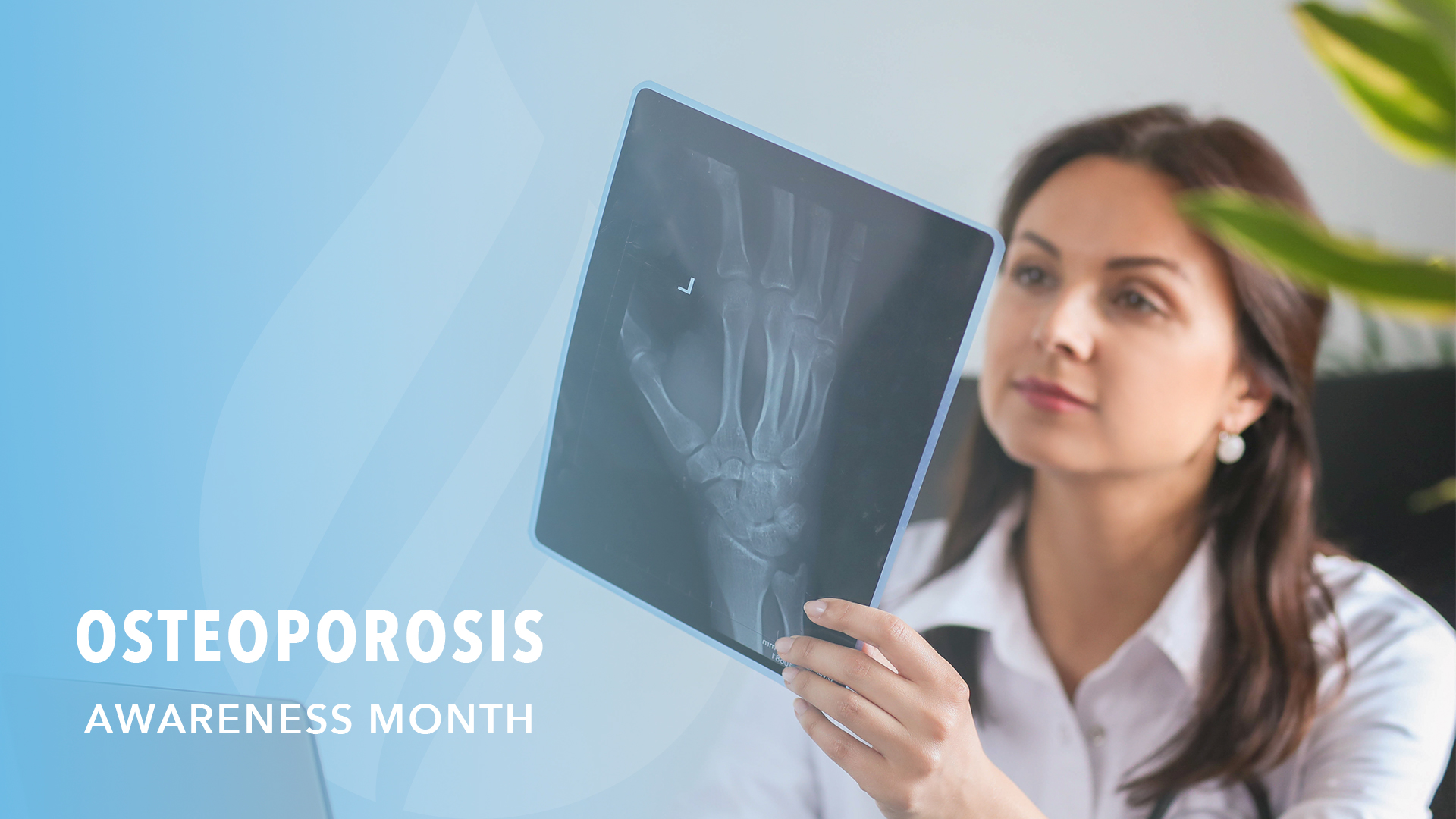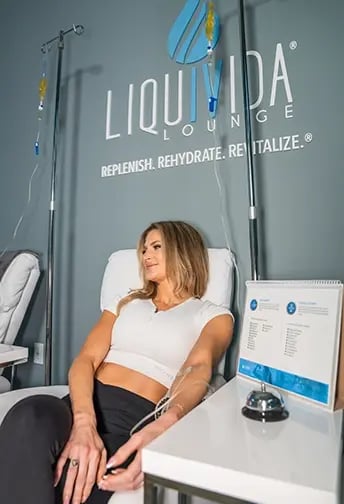May is Osteoporosis Awareness Month, an important time of the year to reflect on increasingly common and debilitating bodily disorder, which can be avoided or at least improved with proper lifestyle changes & solutions offered at Liquivida®.
Every year, an increasing number of Americans are diagnosed with osteoporosis, a disorder that causes bones to weaken and turn out to be much more likely to break over time. You might not realize that you have this “silent” disorder until your bones are so susceptible to damage that a unexpected strain, bump, or fall causes your wrist or hip to fracture. The details below can help protect your bones for the long term!
Many people have these false perceptions about bone loss:
-
Osteoporosis is a natural a part of getting old that mostly impacts older women.
-
Bone loss can’t be treated by the time it starts.
-
The only risk of osteoporosis is damaged bones from falls.
None of these myths are factual. What’s true is:
-
While 1 in 2 ladies over 50 will develop osteoporosis, 1 in four men will, too.
-
It’s very much so possible to make your bones stronger and avoid complications brought on by this very common condition
Below, we uncover the core causes of osteoporosis, and the solutions available to help give your bones the sturdy future they deserve!
Bone Density changes as we age, but did you know our dietary and lifestyle habits have a HUGE influence on the density (strength) of our bones?
Exercising too much, exercising too little, eating too much unhealthy food, eating too little calories, and following nutrient-restrictive diets all have negative affects on the health and wellness of our bodies, especially our bone health.

Osteopenia vs. Osteoporosis: The Difference
Osteopenia is less severe than osteoporosis, but still should not be taken lightly. Osteopenia is a loss of bone mass or bone mineral density. It is the stage before osteoporosis, and without treatment, it can progress to osteoporosis. Osteoporosis happens when bone mineral density and bone mass decrease even further or when there are structural changes to bone tissue. Osteoporosis weakens the bones and increases the risk of fractures.
How Osteoporosis Develops
Bones are in a state of constant flux. Old bone is reabsorbed, and new bone is laid down by bone cells called osteocytes. During childhood into adolescence after the onset of puberty, the osteocytes lay down new bone faster than it is being absorbed, reaching peak bone mass at about 15 years of age.
Bone production slows down but continues to about age 30; after that, bone mass shrinks about 1% annually.
This rate of bone loss can be accelerated by such factors as:
- Family history
- Smoking
- Sedentary lifestyle
- Overly strenuous exercising
- Certain medications
- Inadequate nutrition (abundance or malnourishment): Patients with disordered eating (too much, too little, nutrient restrictive) have a higher risk of developing Osteopenia or Osteoporosis, especially when coupled with excessive exercise!
- Hormonal imbalances
Early Onset Osteoporosis & The Importance of Blood Work
Low estrogen, particularly important in children and adolescents who are still growing, leads to a decrease in bone production and an increase in bone absorption at any age.
Women: Have you gone through “the change” either naturally, chemically, or surgically?
Men: Have you had noticed a reduction in testosterone levels that may be indicated by hair loss, libido reduction, energy issues, abdominal fat gain?
It’s important to have your blood work evaluated once every 6-months as a standard for preventative wellness, but you should consider blood work every 3-months while actively working to improve your wellness by losing body fat, exercising more, eating healthier etc, especially if issues are found during your initial blood draw.
Have you ever had your blood work taken and evaluated by our educated team of professionals? If not or if it has been a while, it’s time to make your appointment.
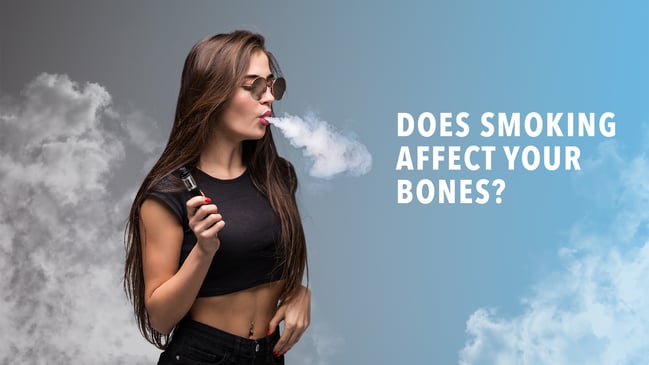
Smoking and Bone Health
Smoking impacts a person at risk for developing osteoporosis in several ways1. In studies, smoking has been shown to:
- Reduce blood supply to the bones
- Slow the production of bone-forming cells
- Impair the absorption of calcium
- Reduce the protective effect of estrogen replacement therapy
Because those who smoke have weakened bones, they are more likely to experience exercise-related injuries, such as fractures or sprains. When they do sustain a fracture, it takes longer to heal. If surgery is required to repair a fractured bone, then a person who smokes is more likely to have a longer recovery period and greater risk of complications following the surgery than one who doesn’t smoke.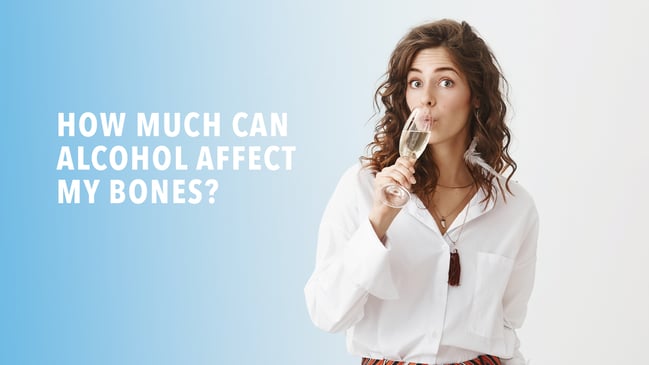
Alcohol and Bone Health
Although alcohol’s damaging effects on bone are most striking in people who drink heavily during adolescence and young adulthood, research has shown that elderly women (between the ages of 67 and 90) who consumed an average of more than 3 ounces of alcohol per day (the equivalent of six typical alcoholic drinks) had greater bone loss than women who had minimal alcohol intake (Hannan et al. 2000).2
The exact way alcohol affects bone isn’t entirely understood, but it seems to interfere most with bone formation. As with smoking, excessive alcohol use has a wide range of damaging health effects for any person but is particularly damaging for persons at risk for osteoporosis.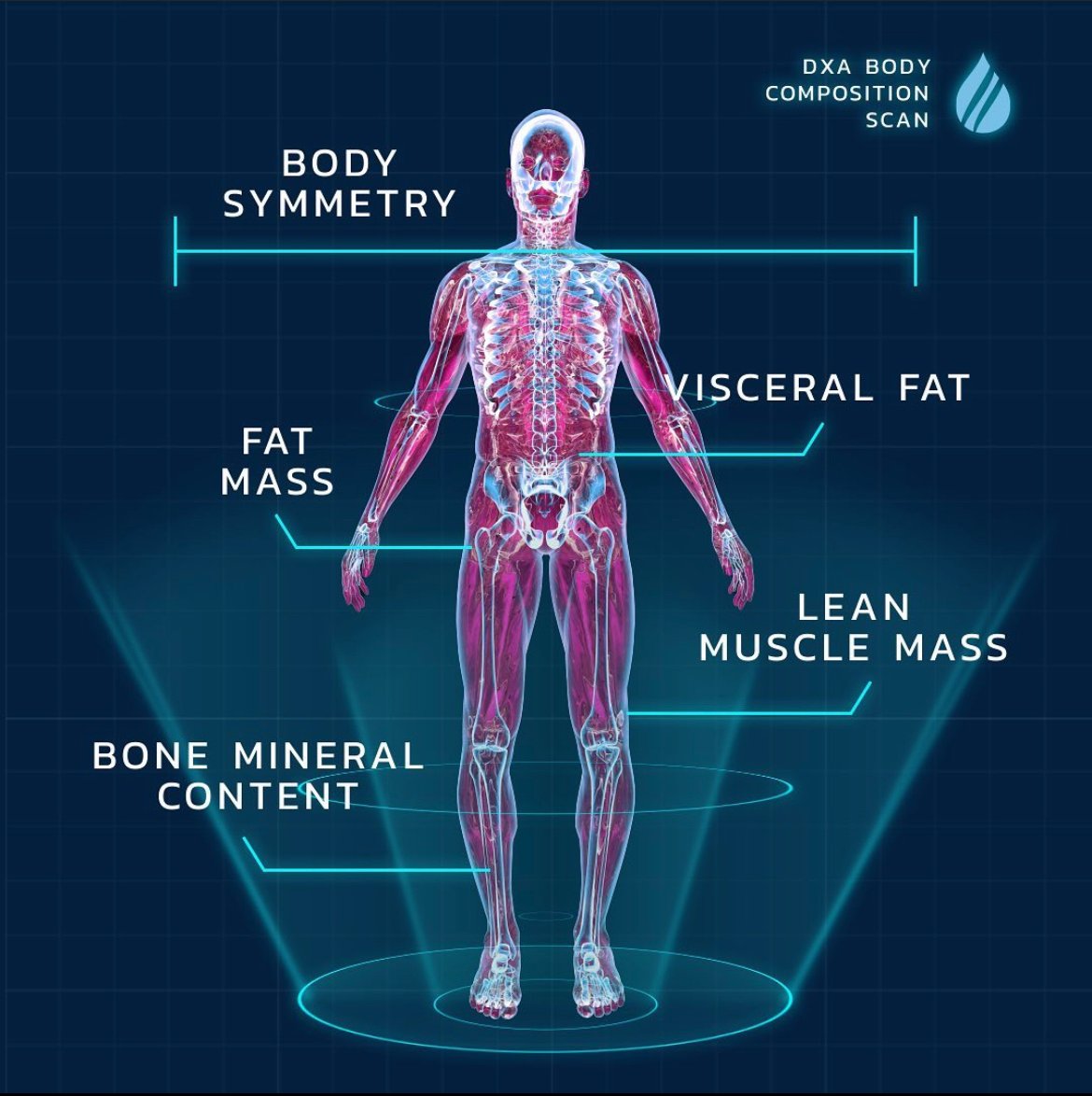
How Can I Find Out About My Bone Density?
Bone density is evaluated using a DXA Scanner. This is a low-powered x-ray device that scans the highest area of fracture risk in the body (lower spine and femoral necks). It is a very quick and painless scan, totaling about 10-minutes from start to finish.
While standard DXA bone density exams conducted in hospitals do NOT include total body composition (body fat, lean mass, visceral fat and bone density), our DXA Body Scan + Bone Density package gives you a complete view of your body composition and health risks beyond your bone density.
DXA Scan+ Bone Density is available in our Fort Lauderdale Liquivida Wellness Center location by appointment only.

Eating For Bone Health
The most popular topic in the world is ALWAYS: NUTRITION. We all want to know what to eat for our health goals when it comes to fat loss and building muscle, but what about what to eat for your bone health?
The recommendation is simple: keep your meals lean, balanced and colorful!
Here are a few suggestions that may improve your overall health AND preserve your bone density as well*.
Cut The C.R.A.P.
C.R.A.P. is an acronym that stands for any food items containing Chemicals, Refined sugar & flour, Artificial stuff, Preservatives.
You can find these in more processed items, fast food, fried foods, ready-to-heat meals, soda, snack cakes, toppings, dressings, candy and more.
Reducing items in our diet such as caffeine, added sugars, and processed foods while swapping them for more “whole foods” such as lean protein, dark leafy green vegetables, dark-colored fruits, beans, grains, and foods rich in omega-3 fatty acids can help preserve and slow progression of bone mineral density loss. While it is unlikely to “reverse” bone mineral density loss, we can slow the process down with the right lifestyle changes!
Consume a diet rich in:
- Lean proteins, especially oily fish like salmon.
- Avocado
- Whole Eggs
- Vitamin C + D rich fruits like berries, apricots, prunes.
- Whole grains
- Seeds and Nuts
- Green foods such as broccoli, cabbage, bok-choy.
- Beans such as edamame, kidney beans, navy beans, black beans, lentils.
- Full fat 2% yogurts.
- AVOID foods that say LITE, Fat Free, Reduced, Fat, Sugar Free etc. These are chemically created and have the potential to cause major gut issues, and your gut is where your nutrients are absorbed!
How Many Calories Do I Need to Eat Per Day? Find out with RMR Analysis.
This is the most popular question, and the answer is: it varies per individual.
Everyone has a Total Daily Energy Expenditure (TDEE). This is the total number of calories we burn at rest, during everyday work and life activities, and moderate exercise in a 24-hour period.
You could use an online calculator to get a ballpark estimate, but why would you want to “guess” when there’s a test for that?! This test is called the RMR Analysis, which stands for Resting Metabolic Rate. This test will tell you how many calories you burn in 24-hours at rest, during daily life and moderate exercise as well as your metabolism speed (slow, fast or normal) and what your body wants to burn as energy in a fasted (no food, caffeine, exercise etc) state on the day of the test (Fat or Sugar).
Why Is This Important?
Remember back in the text when I talked about nourishment in relation to exercise? When you under eat and exercise hard, this has an affect on your metabolic rate, and the same with overeating and sedentary exercise.
Getting adequate nutrition based on your energy expenditure levels is crucial for total body wellness and bone health alike.
The Bottom Line of Bone Health: Your Habits + Preventative Testing
We're not saying that if you eat your vegetables, exercise every day, and never enjoy a stitch of alcohol for the rest of your days that you will improve or preserve your bone health. If the answer to aging and complex health issues were as simplified as the guidelines within this text, the world would be an entirely different place, but what WE ARE saying is that YOU have the power to optimize your wellness with the resources available at Liquivida Lounge. From lab testing, metabolic testing, IV drips, injections, supplements, and lifestyle counseling, we have all the resources you need to succeed and stay healthy!
